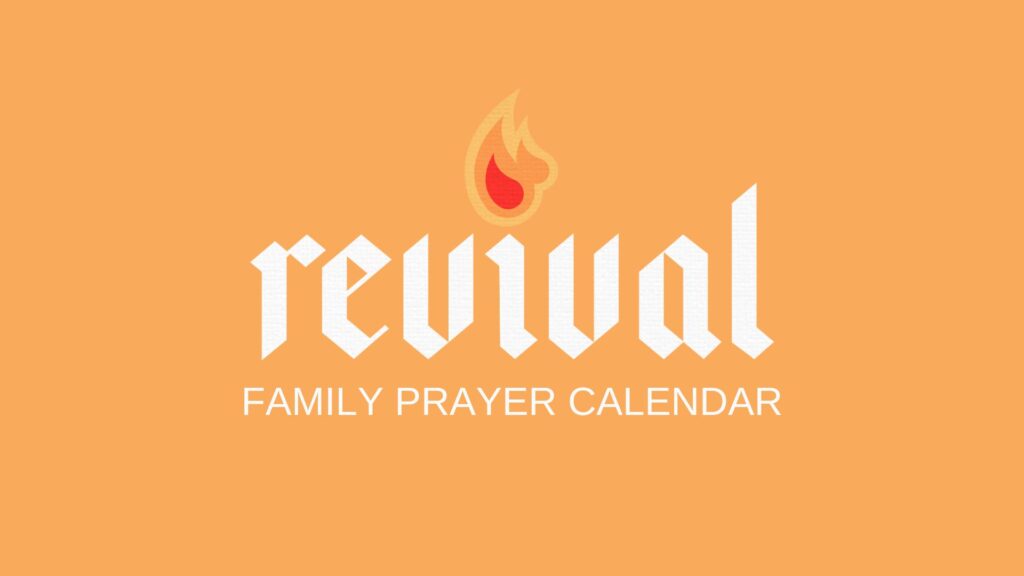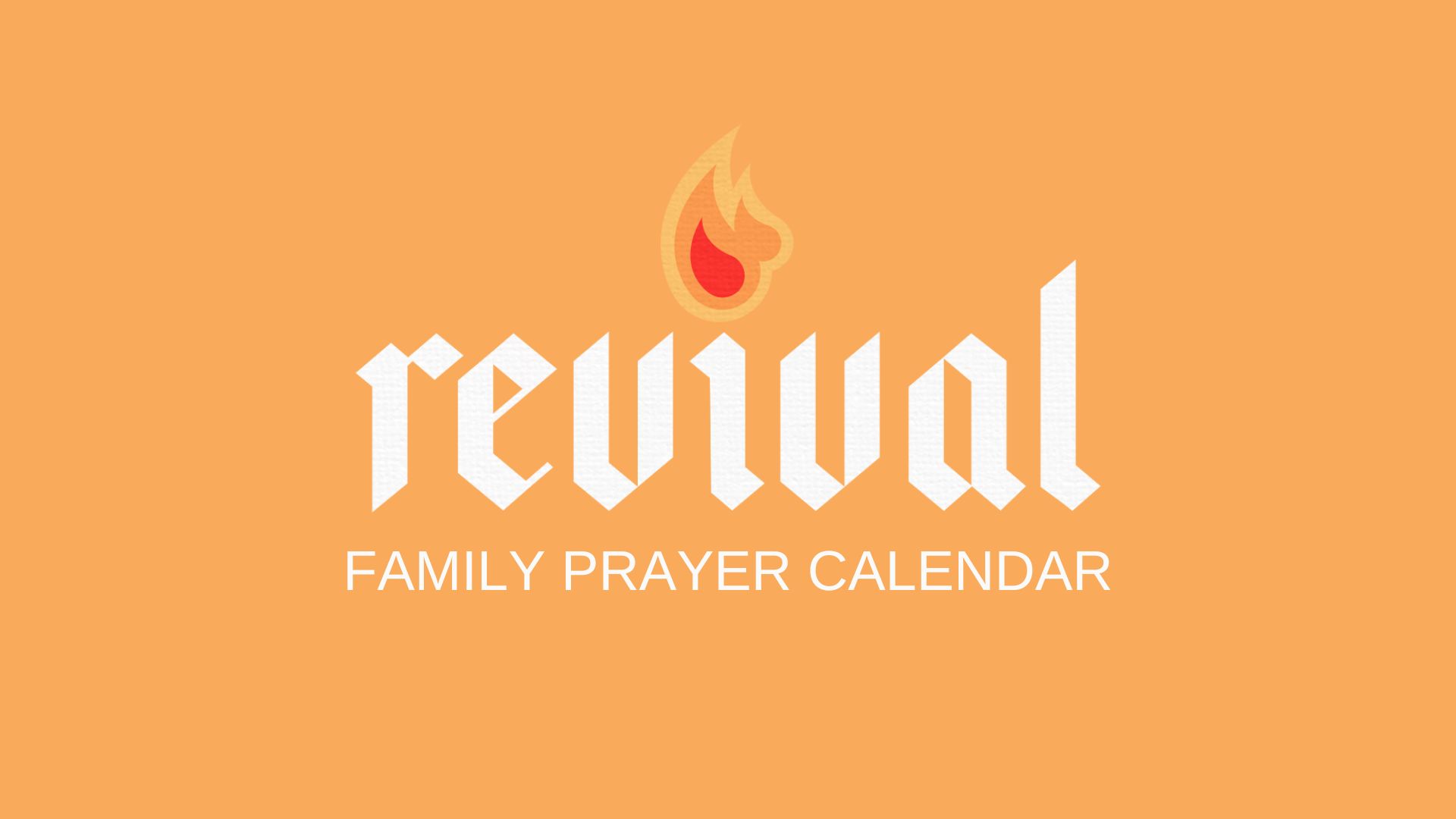
Strengthening Bonds: The Power of a Family Prayer Calendar
In today’s fast-paced world, families often find themselves disconnected, struggling to find quality time and meaningful connection. Amidst the chaos of schedules and commitments, the practice of family prayer can serve as a powerful anchor, grounding members in shared values and fostering a sense of unity. A family prayer calendar is a simple yet effective tool to cultivate this spiritual discipline, transforming fleeting moments into opportunities for connection and growth. This article explores the benefits of implementing a family prayer calendar, provides practical tips for creating and maintaining one, and highlights inspiring examples to help you embark on this enriching journey.
Why Implement a Family Prayer Calendar?
The benefits of establishing a consistent prayer life as a family are numerous and far-reaching. Here’s a closer look at some key advantages:
- Strengthened Family Bonds: Praying together creates a shared experience, fostering empathy and understanding among family members. When individuals voice their concerns and gratitude, others gain insight into their inner world, strengthening the bonds of love and support.
- Enhanced Communication: A family prayer calendar encourages open and honest communication. Children and adults alike learn to express their thoughts and feelings in a safe and supportive environment. This practice can improve communication skills and create a culture of vulnerability within the family.
- Spiritual Growth: Regular prayer nurtures individual and collective spiritual growth. It provides opportunities to reflect on faith, values, and the presence of a higher power in daily life. This shared spiritual journey can deepen each family member’s understanding of their beliefs and strengthen their commitment to living a life of purpose.
- Reduced Stress and Anxiety: Prayer has been shown to have a calming effect on the mind and body. Taking time to pray together can help family members manage stress, reduce anxiety, and cultivate a sense of peace. The act of surrendering worries and concerns to a higher power can provide comfort and reassurance during challenging times.
- Instilled Values: A family prayer calendar can be used to reinforce important values such as gratitude, compassion, forgiveness, and service. By focusing on these values in prayer, families can create a shared moral compass and guide their actions in accordance with their beliefs.
Creating Your Family Prayer Calendar: A Step-by-Step Guide
Designing a family prayer calendar that works for your unique family dynamics requires careful consideration and a collaborative approach. Here’s how to get started:
Step 1: Gather Input from All Family Members
Involve everyone in the planning process. Ask each family member what they would like to pray for, what times of day work best for them, and what format they prefer (e.g., written prompts, guided meditations, spontaneous prayers). This ensures that the calendar reflects the needs and preferences of all participants, increasing the likelihood of adherence.
Step 2: Choose a Format and Theme
Select a format that is visually appealing and easy to use. Options include a physical calendar, a whiteboard, a digital spreadsheet, or a dedicated app. Consider incorporating a theme, such as gratitude, kindness, or specific needs within the community. A theme can provide focus and direction for your prayers.
Step 3: Assign Specific Prayer Topics to Each Day
Allocate specific prayer topics to each day of the week. For example:
- Monday: Prayers for the week ahead, focusing on upcoming challenges and opportunities.
- Tuesday: Prayers for family members, highlighting individual needs and concerns.
- Wednesday: Prayers for friends and neighbors, extending compassion and support to those around you.
- Thursday: Prayers for the community, addressing local issues and needs.
- Friday: Prayers of gratitude, expressing appreciation for blessings and positive experiences.
- Saturday: Prayers for global issues, focusing on peace, justice, and humanitarian concerns.
- Sunday: Prayers of thanksgiving and reflection on spiritual growth.
Step 4: Keep it Simple and Flexible
Avoid overwhelming yourselves with lengthy or complicated prayers. Keep the prayers short and simple, focusing on sincerity and intention. Be flexible and willing to adjust the calendar as needed to accommodate changing circumstances and evolving needs. The family prayer calendar should be a source of comfort and connection, not a burden.
Step 5: Make it Visible and Accessible
Place the family prayer calendar in a prominent location where everyone can see it regularly, such as the kitchen, dining room, or living room. Ensure that it is easily accessible and that family members are reminded to participate. Consider setting a daily alarm or creating a visual cue to prompt prayer time.
Creative Ideas for Your Family Prayer Calendar
To keep your family prayer calendar engaging and meaningful, consider incorporating these creative ideas:
- Prayer Jar: Fill a jar with written prayer requests from family members and draw one out each day.
- Gratitude Tree: Create a paper tree and have family members write things they are grateful for on leaves to hang on the tree.
- Photo Prayers: Use photos of family members, friends, or community members as visual prompts for prayer.
- Scripture Integration: Incorporate relevant Bible verses or inspirational quotes into your daily prayers.
- Music and Meditation: Use calming music or guided meditations to enhance the prayer experience.
- Acts of Service: Connect your prayers with acts of service by volunteering or helping those in need.
Examples of Family Prayer Calendar Topics
Here are some specific examples of prayer topics you can include in your family prayer calendar:
- Personal Needs: Pray for strength, guidance, healing, and peace in facing personal challenges.
- Family Relationships: Pray for stronger bonds, improved communication, and forgiveness within the family.
- Friends and Neighbors: Pray for their health, well-being, and happiness.
- Community Issues: Pray for solutions to local problems such as poverty, homelessness, and violence.
- Global Concerns: Pray for peace, justice, and an end to suffering around the world.
- Gratitude: Express thanks for blessings such as health, family, friends, and opportunities.
- Spiritual Growth: Pray for deeper understanding of faith, increased compassion, and a stronger connection with a higher power.
Tips for Maintaining a Consistent Family Prayer Practice
Consistency is key to reaping the benefits of a family prayer calendar. Here are some tips to help you maintain a regular practice:
- Set Realistic Expectations: Start small and gradually increase the frequency and duration of your prayer sessions.
- Establish a Routine: Designate a specific time each day for family prayer and stick to it as much as possible.
- Be Flexible: Don’t get discouraged if you miss a day or two. Simply pick up where you left off and keep moving forward.
- Make it Enjoyable: Find ways to make prayer fun and engaging for all family members.
- Celebrate Successes: Acknowledge and celebrate your progress in establishing a consistent prayer practice.
Overcoming Challenges in Family Prayer
Even with the best intentions, families may encounter challenges in implementing a family prayer calendar. Here are some common obstacles and strategies for overcoming them:
- Lack of Time: Prioritize prayer time and find creative ways to incorporate it into your daily routine, such as praying during meals or before bedtime.
- Disagreement Among Family Members: Respect differing opinions and find common ground in shared values and beliefs.
- Distractions: Create a quiet and distraction-free environment for prayer.
- Boredom: Introduce variety and creativity into your prayer sessions to keep them engaging.
- Lack of Motivation: Remind yourselves of the benefits of family prayer and support each other in maintaining the practice.
The Long-Term Impact of Family Prayer
The consistent practice of family prayer can have a profound and lasting impact on individuals and the family as a whole. It can strengthen relationships, foster spiritual growth, reduce stress, instill values, and create a sense of unity and purpose. By investing in a family prayer calendar, you are investing in the well-being and future of your family.
A family prayer calendar is more than just a schedule; it’s a tool for connection, growth, and spiritual enrichment. By following these guidelines and adapting them to your family’s unique needs and preferences, you can create a powerful practice that will strengthen your bonds and deepen your faith for years to come. Consider the positive impact this simple addition can bring to your family’s life. Remember that a family prayer calendar is a journey, not a destination. Embrace the process, be patient, and celebrate the small victories along the way. The rewards will be well worth the effort.
Start building your family prayer calendar today and witness the transformation it brings to your home. The power of prayer, when shared, is truly extraordinary. [See also: Benefits of Daily Family Devotions] and [See also: How to Create a Meaningful Family Tradition]

